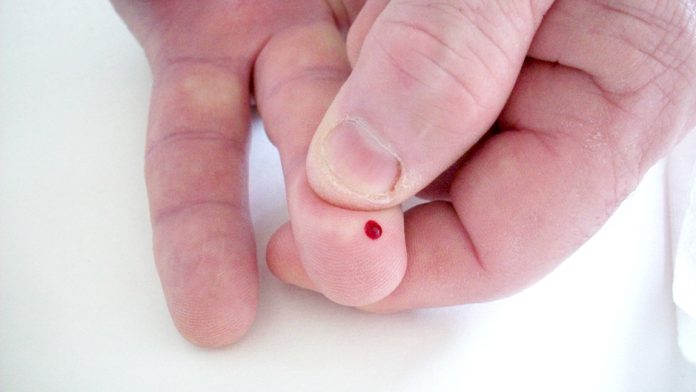Imagine that after a series of invasive tests, you were treated for a cancer you didn’t have. This is the reality for patients falsely diagnosed with prostate cancer. While no test is perfect, even biopsies in suspected prostate cancer cases have a 15% error rate.
At the root of the problem is the inherent difficulty in distinguishing between true cases of malignant prostate cancer and neutral cases of benign prostatic hyperplasia, which is present in almost every male over the age of 60.
Prof. Hon Leong, assistant professor at Western University’s Schulich School of Medicine, is searching for more concrete signs of prostate cancer to reduce the number of false diagnoses and unnecessary biopsies. He calls his blood test a fluid biopsy, and he looks for small waste fragments from prostate cells called microparticles, using only a single drop of blood.
Microparticles circulate in the bloodstream of all men over the age of 40, regardless of their health status, but the precise concentration predicts prostate cancer risk. The technique uses a nanoscale flow cytometer, a specialized instrument commonly used to test water purity, to measure microparticle concentration. Results from this non-invasive test take only a few minutes to achieve.
Current blood tests for prostate cancer look for a molecule called prostate-specific antigen (PSA), but 75% patients testing positive for PSA biopsy negative for prostate cancer. A standard prostate biopsy, while necessary to confirm suspected cancer cases, uses 12 needles inserted into the rectum in hope of collecting cells from an area of the prostate with a tumour. These procedures are not only painful, but they are also associated with bleeding and urinary tract infection, sending many patients back to the hospital with complications. Even a 5% reduction in false positives at the bloodwork stage would eliminate ~165,000 unnecessary biopsies and 6,930 hospitalizations each year in North America.
The next step is to compare the microparticle and PSA blood tests in patients prior to biopsy. If successful in identifying prostate cancer patients more accurately, the fluid biopsy could reduce the number of unnecessary biopsies and false diagnoses.





































